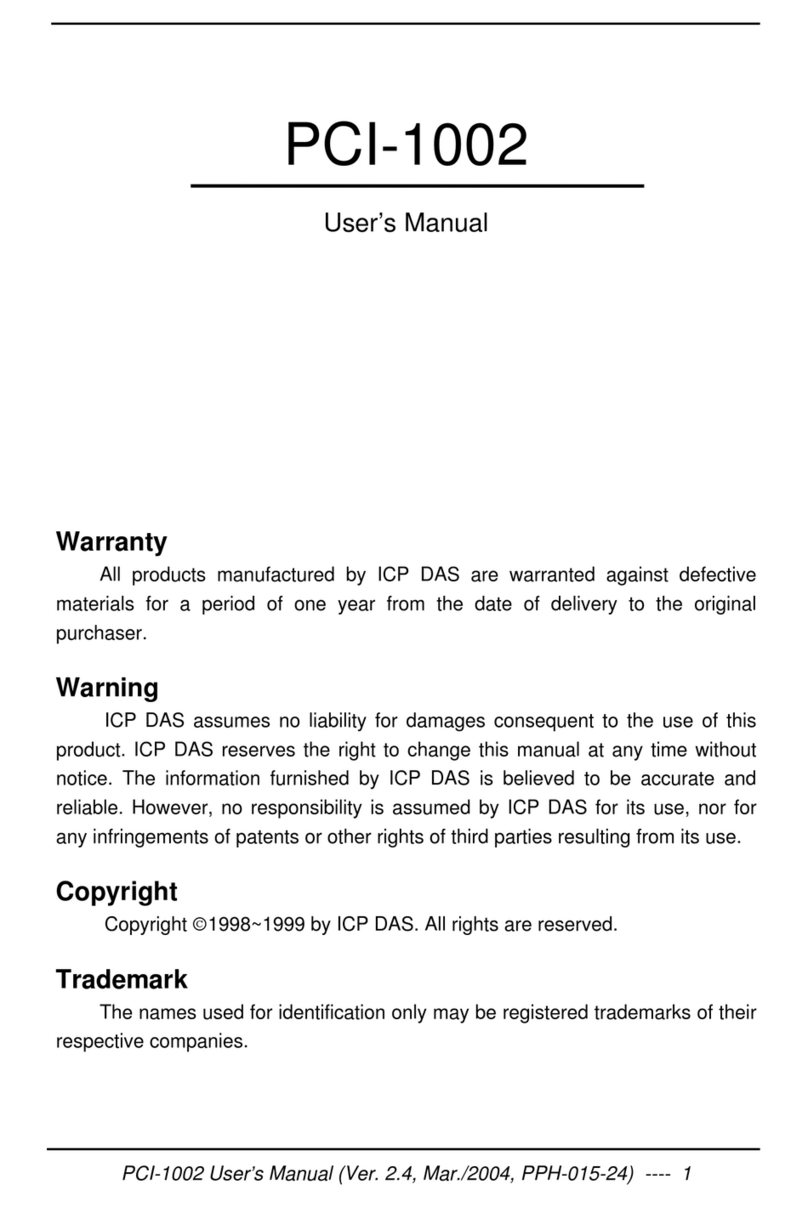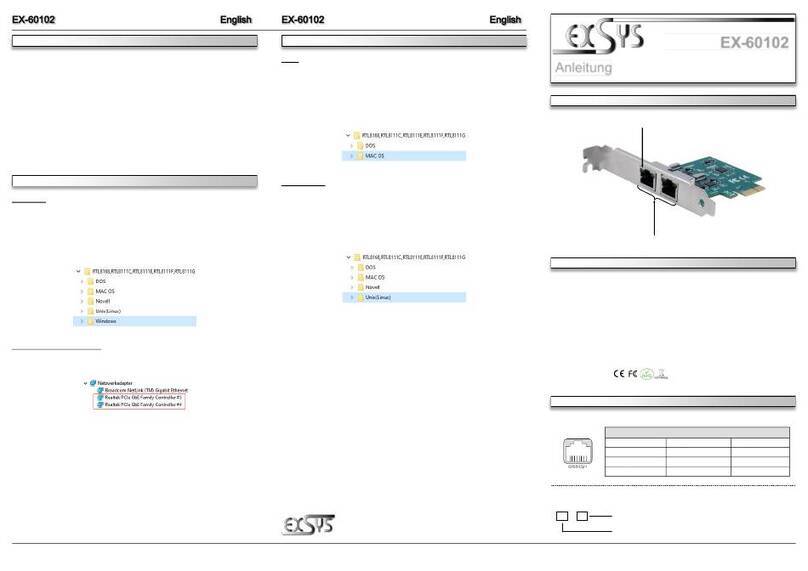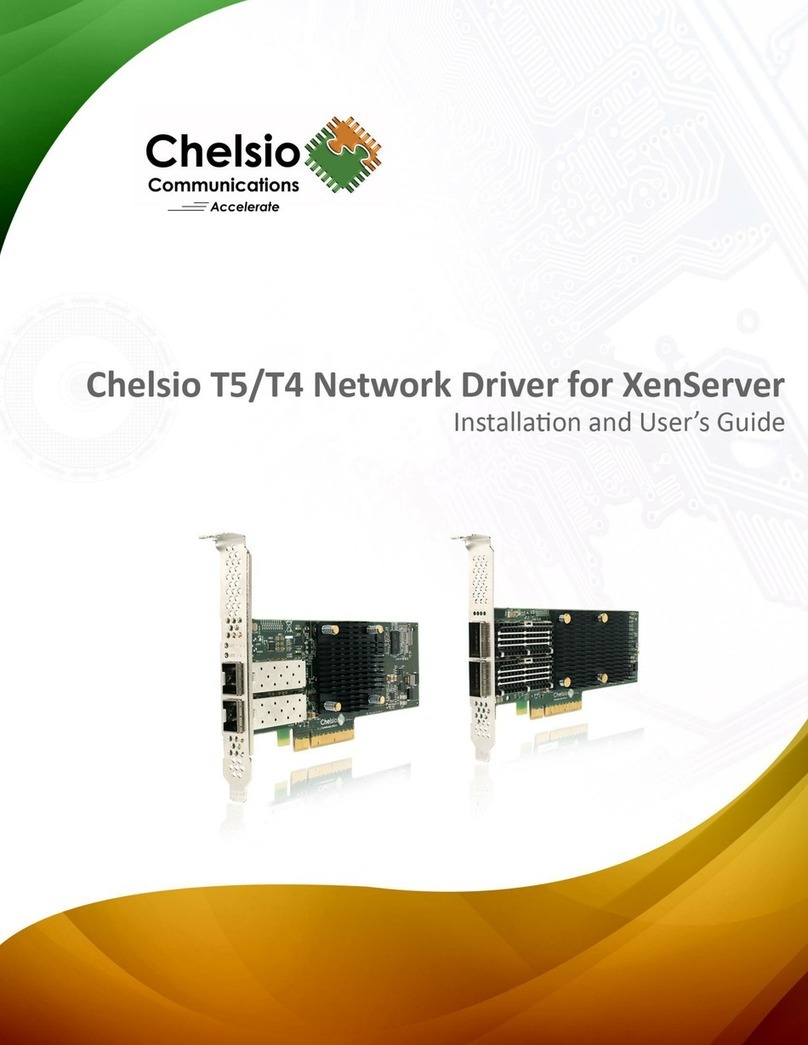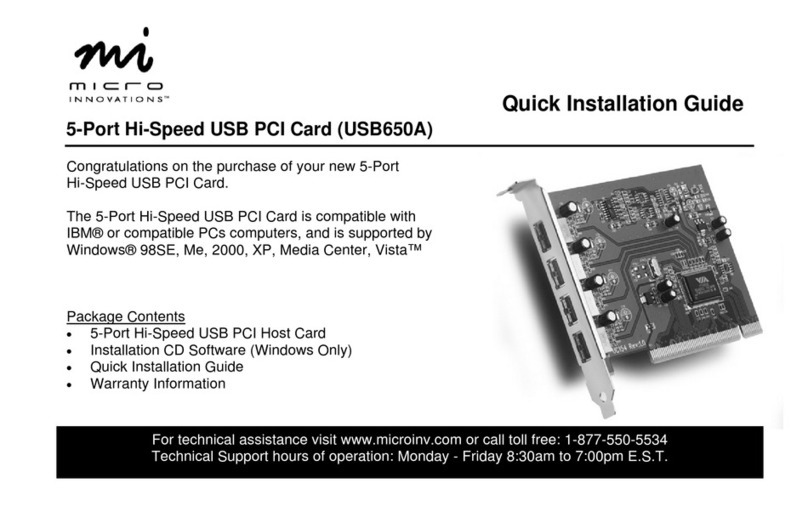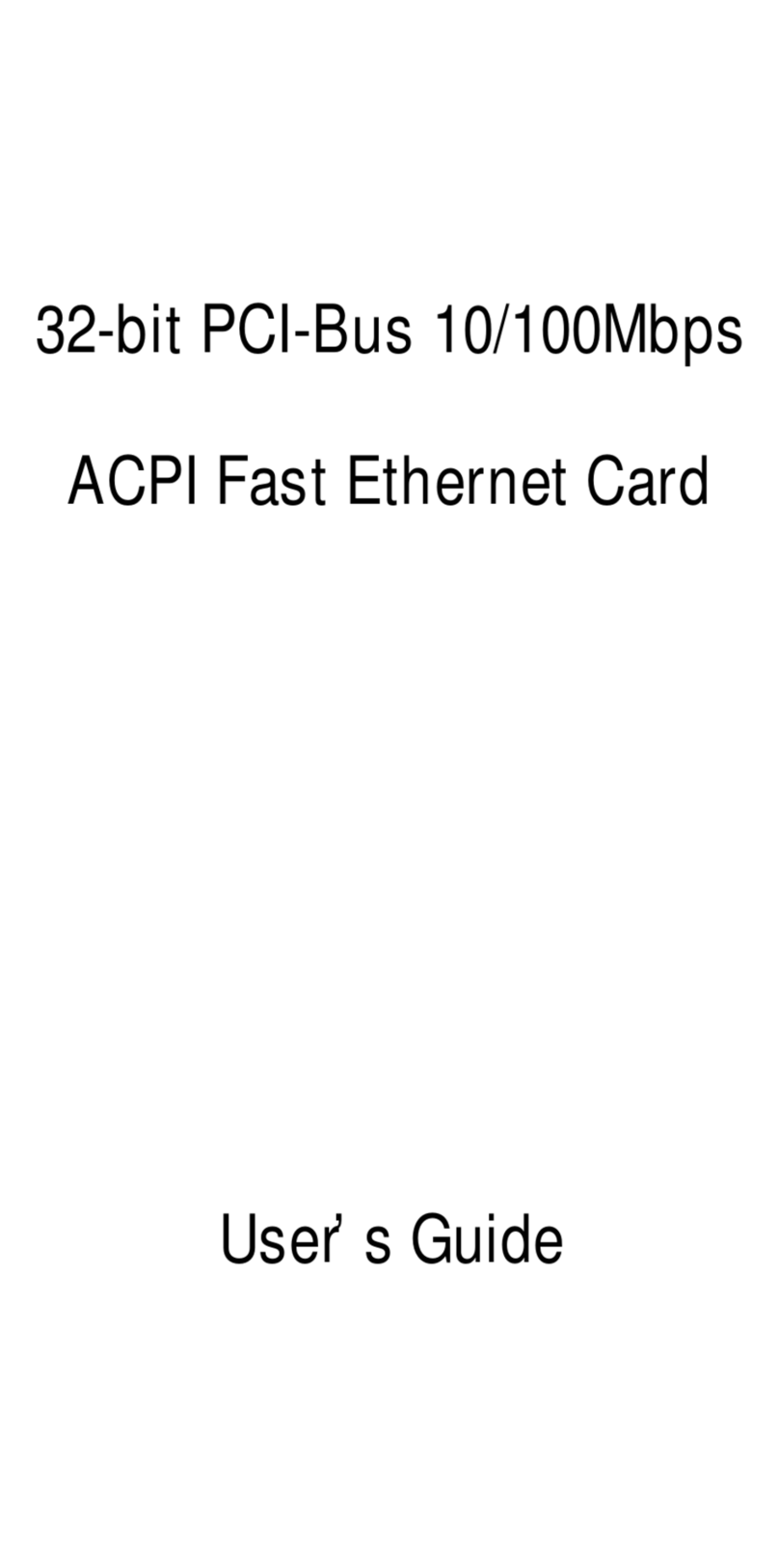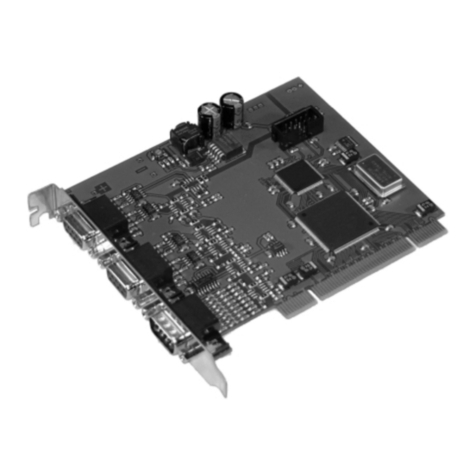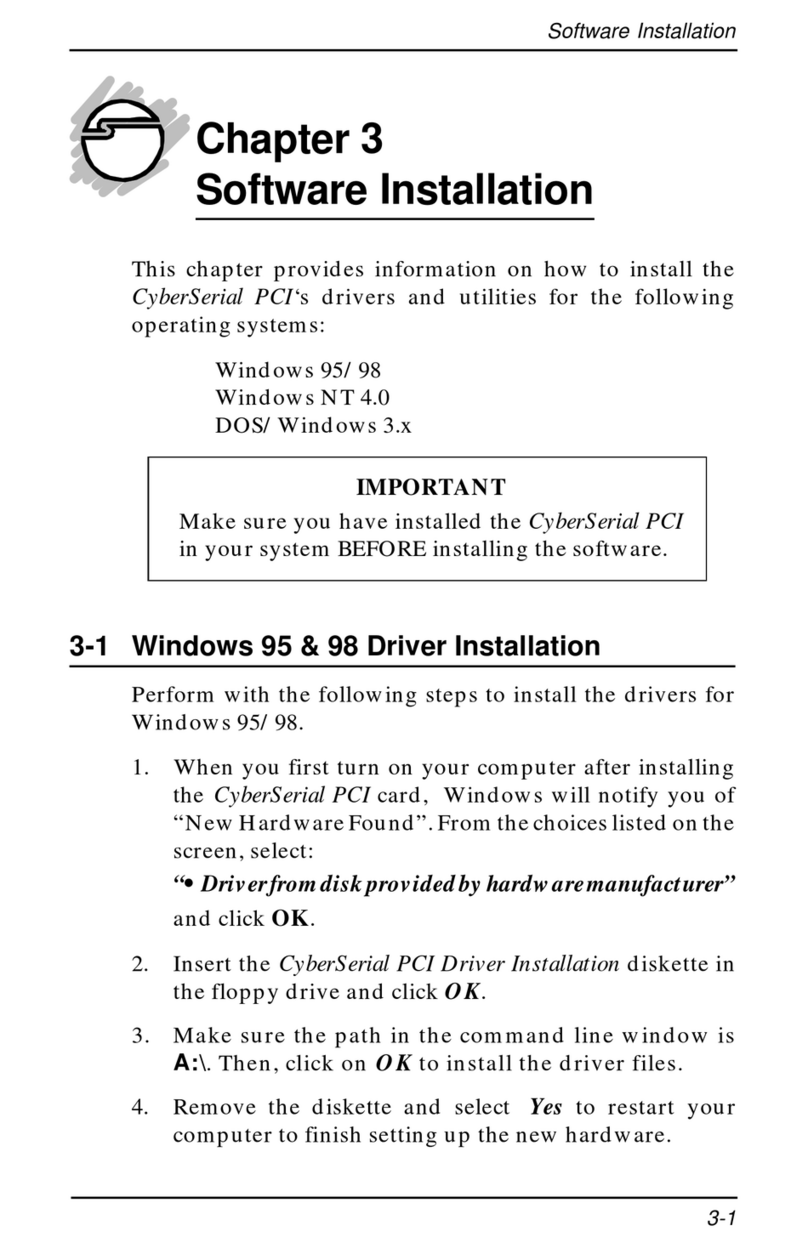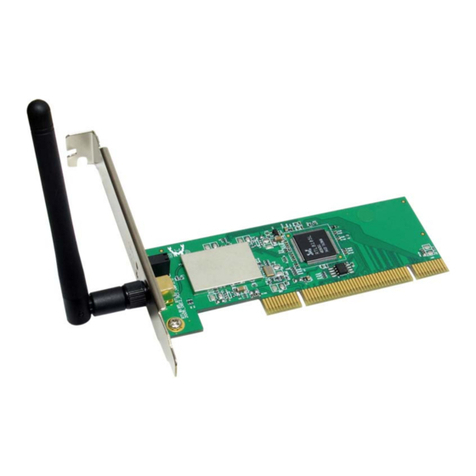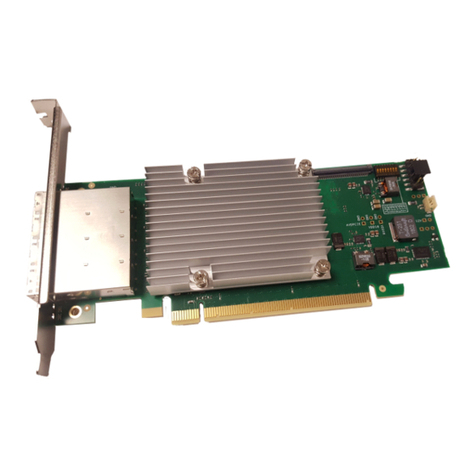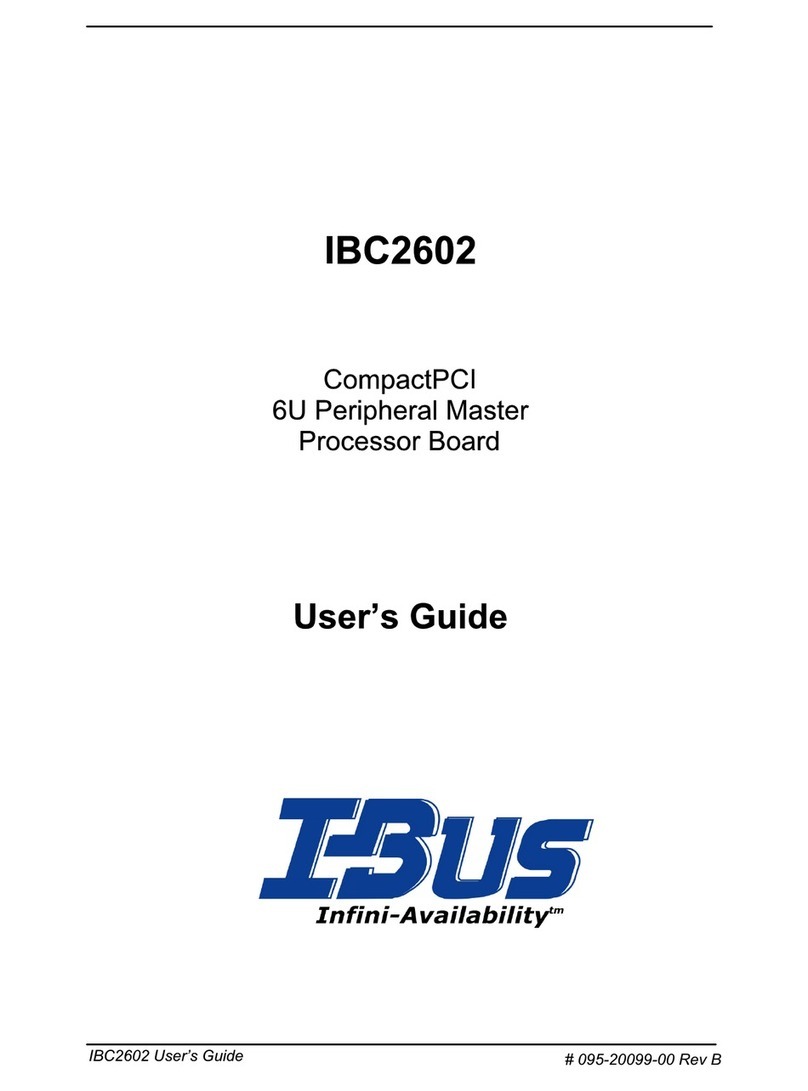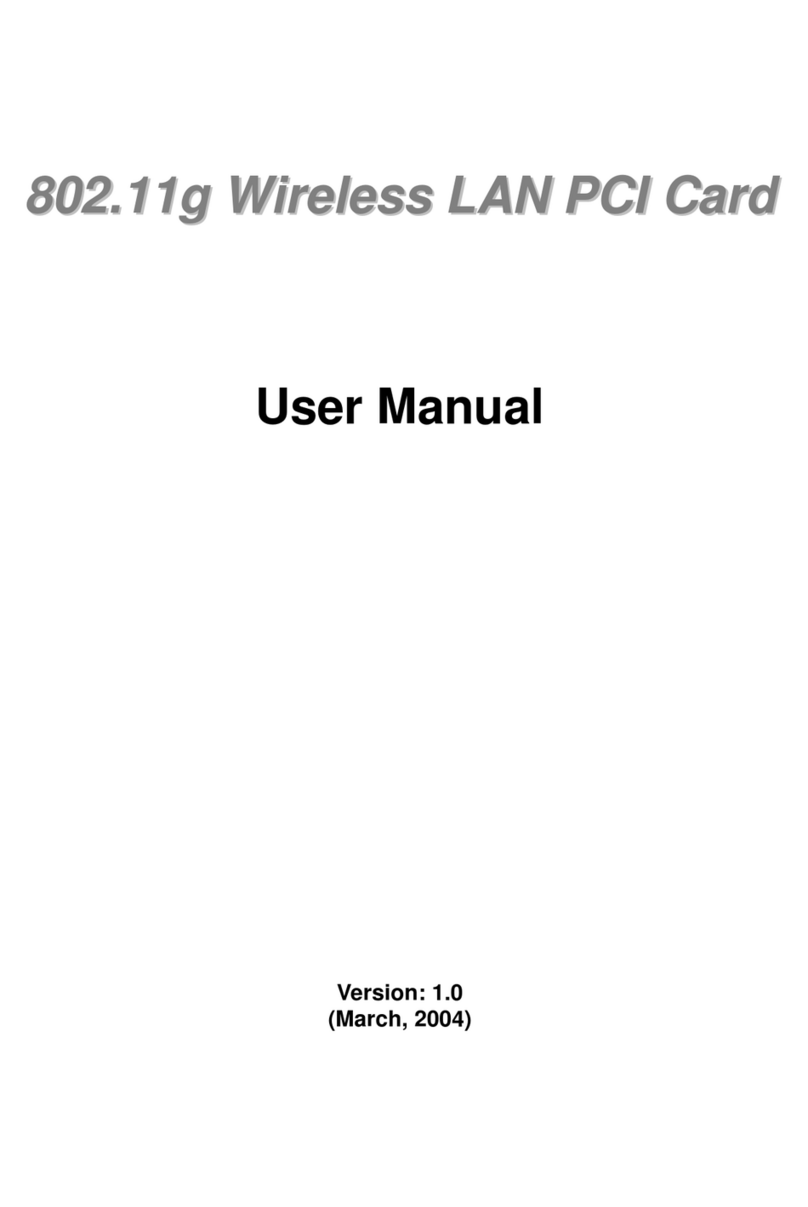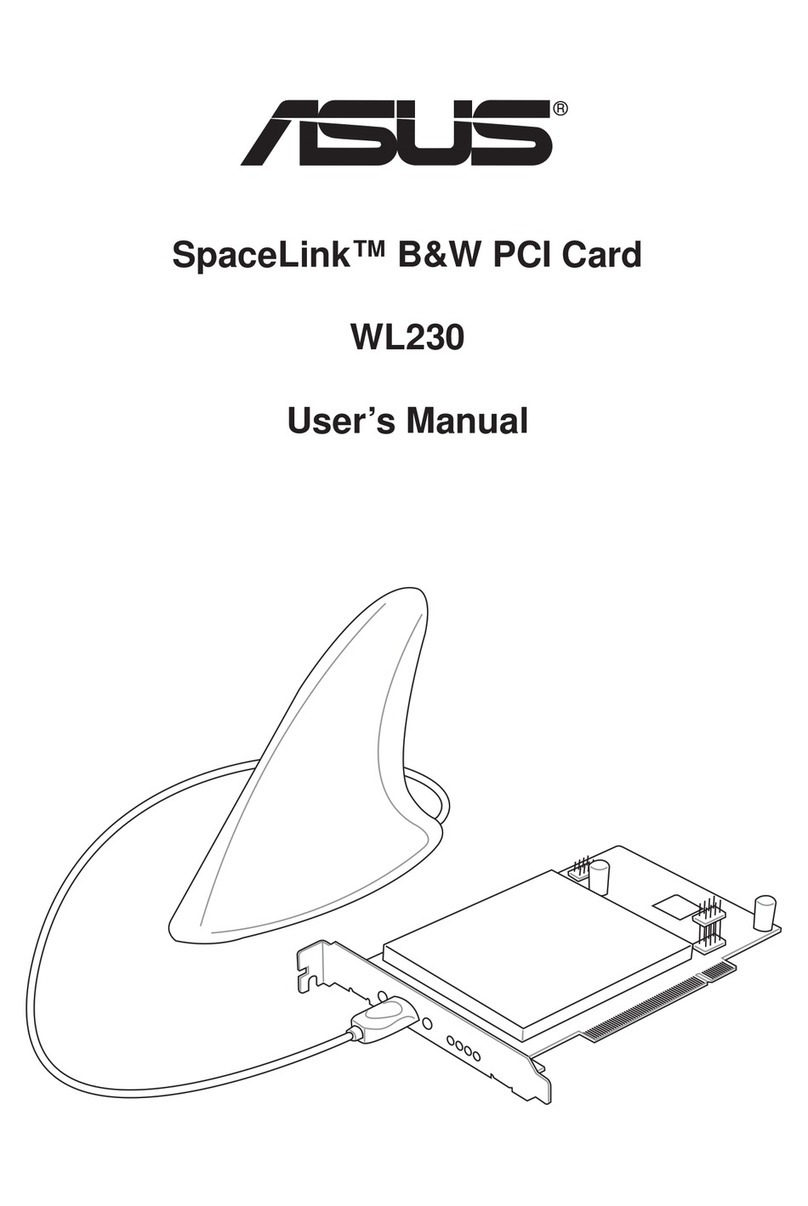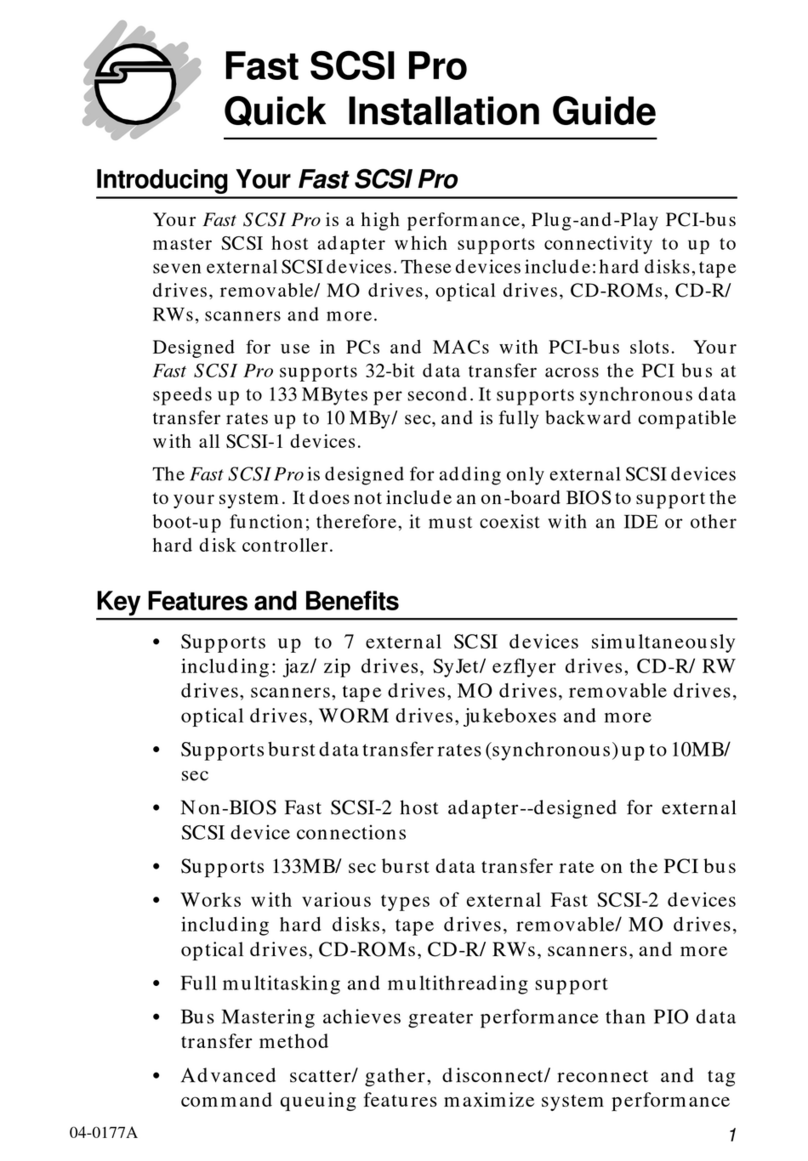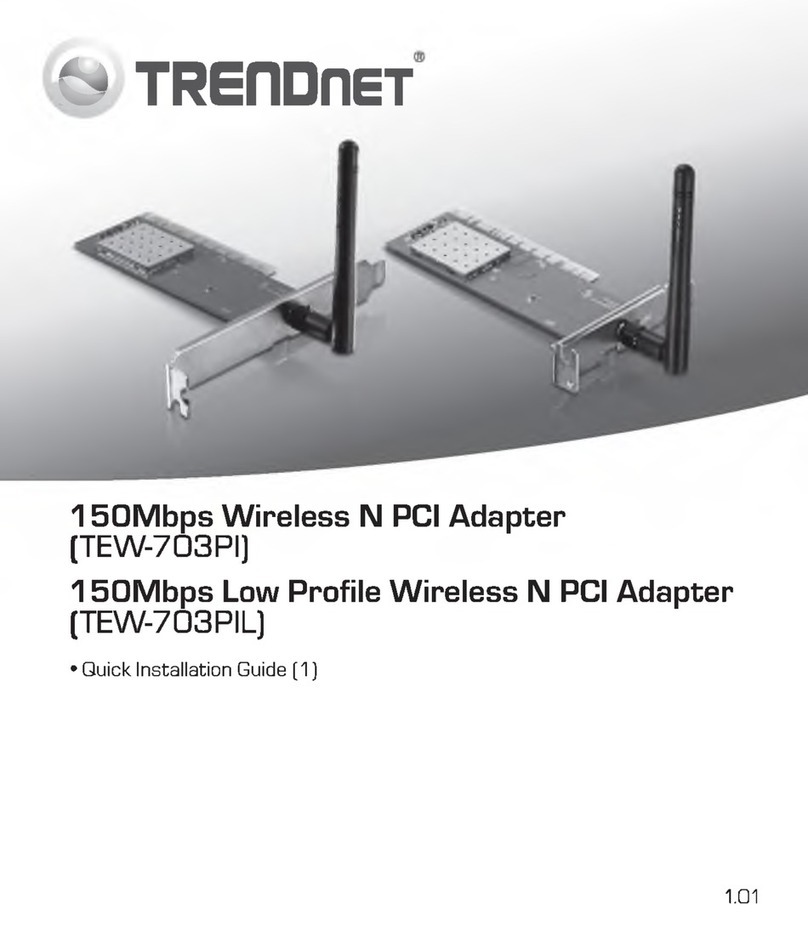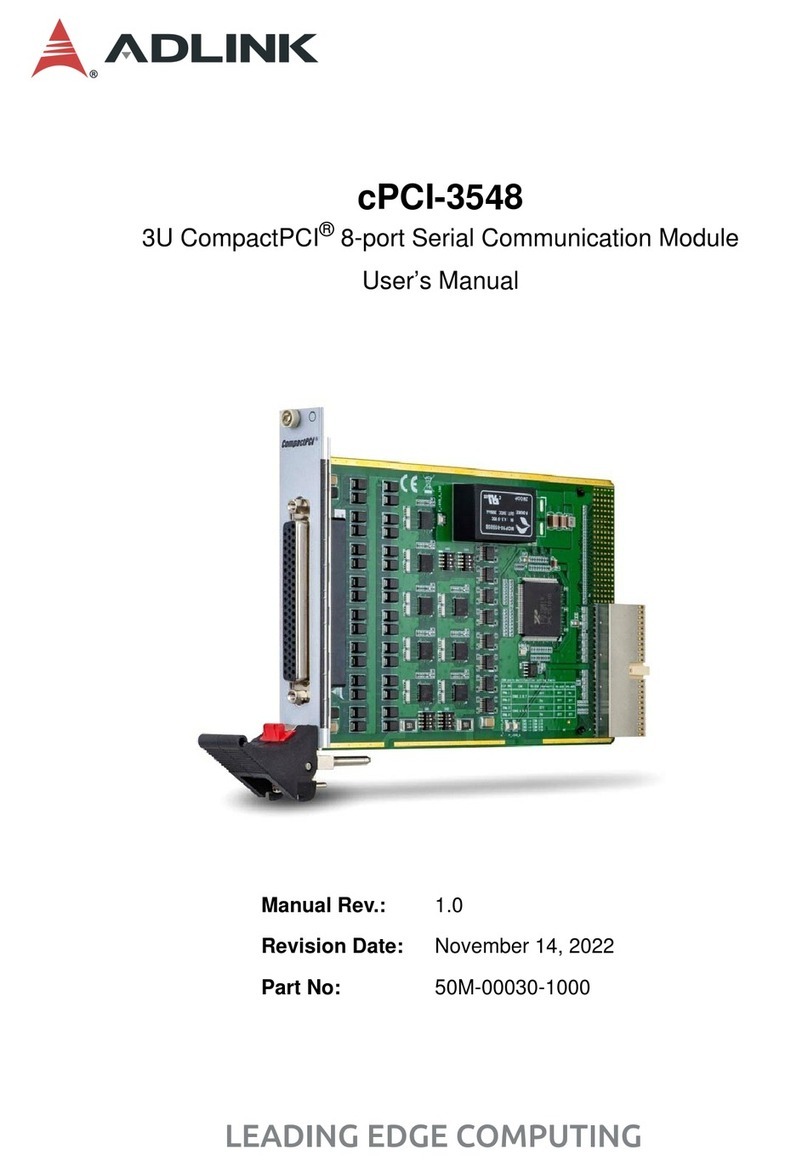
*Notice: The information in this document is subject to change without notice
Tsi301
Tsi301 HyperTransport to PCI User Manual 1-10
1.3.1 PCI Master
As a PCI master, the HyperTransport PCI bridge chip can generate MemRd/Wr, IORd/Wr, and ConfigRd/
Wr cycles.
•The HyperTransport PCI bridge does not implement a cacheline size register and does not prefetch to
PCI, so it never generates MemRdLine, MemRdMult, or MemWrInv cycles.
•The HyperTransport PCI bridge does not support a Southbridge connection to its PCI bus, so it never
generates INTA cycles.
•The HyperTransport PCI bridge does not generate Special cycles.
PCI master cycles that are retried or disconnected on the PCI bus are reissued locally by the HyperTrans-
port PCI bridge until they complete. The HyperTransport PCI bridge can track up to four outstanding requests
in the Outbound Request Controller, of which a maximum of three may be nonposted requests. The Hyper-
Transport PCI bridge rotates among these requests to maximize bandwidth in the presence of retries or
disconnects.
1.3.2 PCI Slave
As a PCI slave, the HyperTransport PCI bridge can respond to all types of memory and I/O cycles.
However, the HyperTransport PCI bridge never responds to PCI configuration cycles.
•The HyperTransport PCI bridge employs medium DEVSEL# timing.
•All PCI slave writes, including I/O writes, are posted.
•A total of 48 doublewords (DW) of write data buffering are provided on the chip.
•All PCI slave reads are implemented as delayed requests, with up to four delayed requests
outstanding at once.
Prefetching is supported for all flavors of memory read cycle, with separate prefetch controls for each cycle
type and a maximum prefetch per read of 128 DW. Prefetching may be done once at the beginning of each
read, or it may be enabled to continuously issue requests as data is drained to PCI. All prefetch data is
discarded when the read disconnects on the PCI bus. The bridge chip provides buffer space for a total of
256 DW of read prefetch data.
1.3.3 PCI Arbiter
The HyperTransport PCI bridge implements an on-chip two-level PCI Arbiter with request/grant pairs: 7
pairs in Pass1, 6 pairs in Pass2. The request/grant pairs in Pass1 include two high-priority sets for the on-chip
PCI master, one high priority set for an external requester, and five symmetrical sets for external device use.
In Pass2, there is one high-priority set for the on-chip PCI master.
All connections to the arbiter are through external pins, so its use is optional. The HyperTransport PCI
bridge chip may also be configured to use an external PCI arbiter.
1.4 Interrupt Controller
The HyperTransport PCI bridge implements a HyperTransport interrupt controller. In Pass1, there are
20 external interrupt sources. In Pass2, there are 16 external interrupt sources.
The interrupts pins may be programmed in groups of four to be level or edge-triggered and active high or
low. In Pass1, one group can also be used to generate the special PC compatibility interrupts: SMI, NMI, INIT,
and INTR. In Pass2, SMI, NMI, INIT, and INTR are not available.
1.5 Configuration
Most HyperTransport PCI bridge configuration is done under host software control through accesses
across HyperTransport to the bridge chip’s control/status register (CSR) set. However, some hardware initial-
ization is required to bring up the HyperTransport links before software configuration can occur. To support
hardware initialization, the HyperTransport PCI bridge provides a Serial Initialization Packet (SIP) interface to
read an external SROM during a cold reset sequence.
